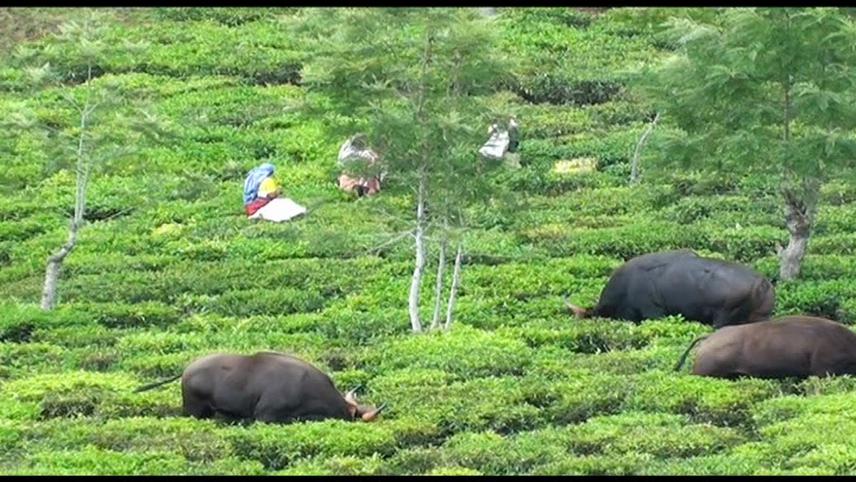Sumin George Thomas
The main objectives of the project are to map populations, habitat and movements of gaur; to create awareness with the active participation of stakeholder groups and implement suitable conservation action to mitigate conflict situations.

Gaur and tea pickers.
The project seeks to address the issue of human-gaur interactions in the Nilgiris, Western Ghats with the aim of pre-empting conflict. Sightings of Gaur (Bos gaurus) have increased especially in human dominated landscapes like tea/coffee plantations and commercial vegetable growing fields. The main objectives of the project are to map populations, habitat and movements of gaur; to create awareness with the active participation of stakeholder groups and implement suitable conservation action to mitigate conflict situations.
The proposed project is a pioneering effort in understanding the conflict dynamics between humans and wildlife in an urban landscape. Human wildlife conflicts are usually associated with landscapes closer to or within forested landscapes. The emerging issue of Gaur sightings within human dominated landscapes is an issue that needs immediate attention, before the situation escalates to a serious level. It is envisaged that this pilot study will strengthen the understanding of the efforts that needs to be taken to resolve the situation.
One of the outcomes of this project is the increased awareness amongst the communities and other stakeholders on gaur movement and habitat within the urban landscape. This will aid in bringing about participatory conservation actions in the region and also ensuring that all stakeholders involved are on a common platform of understanding of the issue. It is also envisaged that with increased awareness and necessary conservation action in place, the conflicts between gaur and humans could be reduced and mitigated to a great extent. It is also crucial that the engagements with the stakeholders are continuous beyond the end of the project period. The Nilgiri Natural History Society is well placed in the region to carry forward this work. The efforts will definitely enhance species conservation in areas outside of protected areas and serve as a model for other areas experiencing similar issues along the Western Ghats.